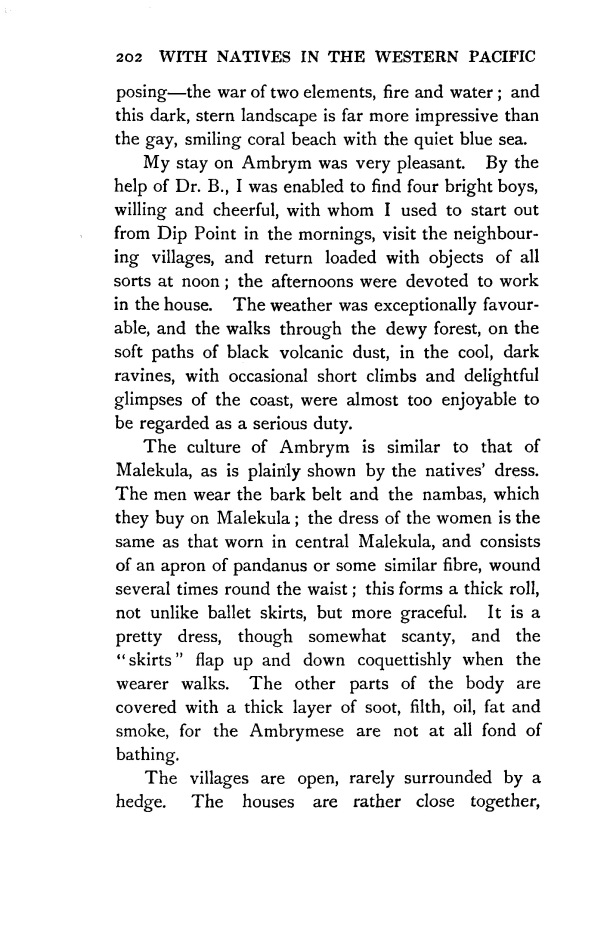|
|  [Note: this transcription was produced by an automatic OCR engine]
202 WITH NATIVES IN THE WESTERN PACIFIC
posing—the war of two elements, fire and water ; and
this dark, stern landscape is far more impressive than
the gay, smiling coral beach with the quiet blue sea.
My stay on Ambrym was very pleasant. By the
help of Dr. B., I was enabled to find four bright boys,
willing and cheerful, with whom I used to start out
from Dip Point in the mornings, visit the neighbour-
ing villages, and return loaded with objects of all
sorts at noon; the afternoons were devoted to work
in the house. The weather was exceptionally favour-
able, and the walks through the dewy forest, on the
soft paths of black volcanic dust, in the cool, dark
ravines, with occasional short climbs and delightful
glimpses of the coast, were almost too enjoyable to
be regarded as a serious duty.
The culture of Ambrym is similar to that of
Malekula, as is plainly shown by the natives’ dress.
The men wear the bark belt and the nambas, which
they buy on Malekula; the dress of the women is the
same as that worn in central Malekula, and consists
of an apron of pandanus or some similar fibre, wound
several times round the waist; this forms a thick roll,
not unlike ballet skirts, but more graceful. It is a
pretty dress, though somewhat scanty, and the
“skirts” flap up and down coquettishly when the
wearer walks. The other parts of the body are
covered with a thick layer of soot, filth, oil, fat and
smoke, for the Ambrymese are not at all fond of
bathing.
The villages are open, rarely surrounded by a
hedge. The houses are rather close together,
|